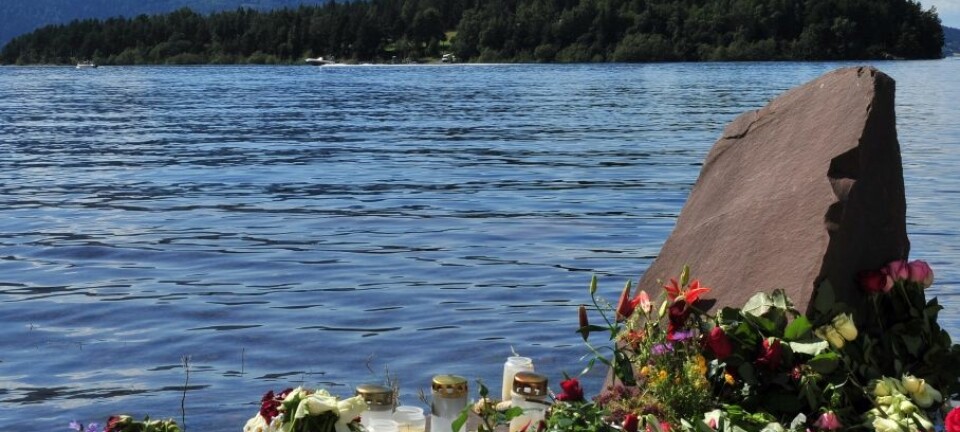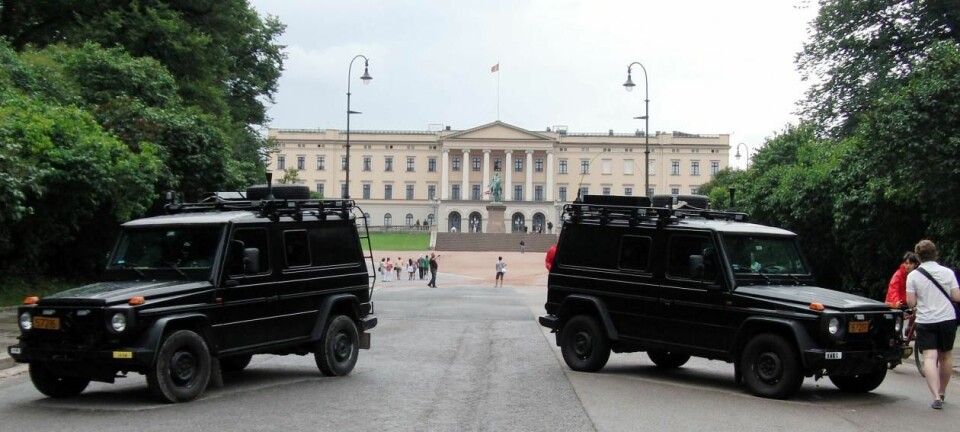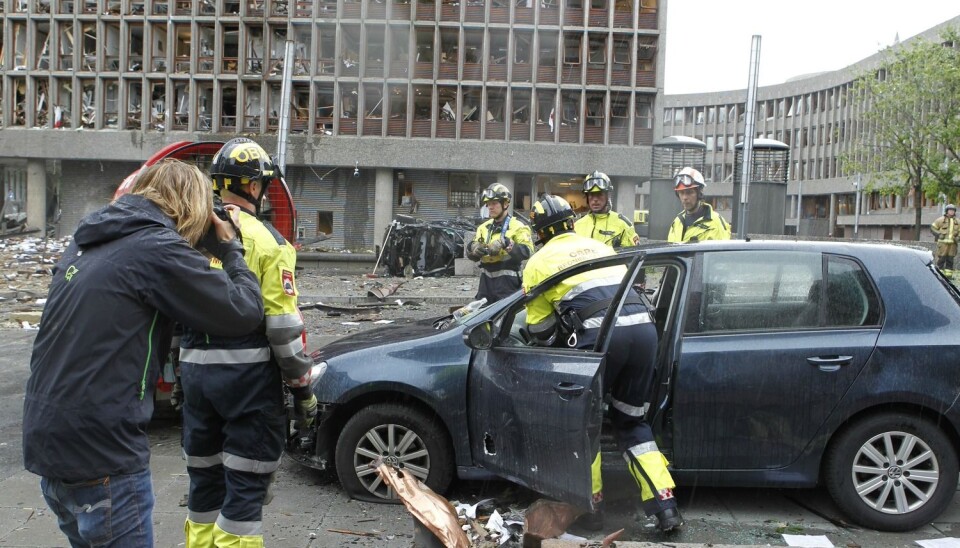
What images did Norwegians see of the 2011 Oslo terrorist attacks?
The first pictures were snapshots taken by photographers who tried to understand what they were seeing. A new study examines images from the period after the worst-ever terrorist attack in Norway.
Denne artikkelen er over ti år gammel og kan inneholde utdatert informasjon.
Some Norwegians may remember a photo of traumatized youngsters at the Sundvolden Hotel. Others might think of a photo of a woman with a long splinter poking out of a head wound.
Anne Hege Simonsen, an associate professor of journalism at Oslo and Akershus University College of Applied Sciences, has examined a large selection of photos from what was Norway’s worst-ever terrorist attack. Seventy-seven people died when Anders Behring Breivik exploded a bomb in the government district in downtown Oslo, and later that day, massacred mostly teenagers and young adults on a small island about 40 km from Oslo called Utøya. Simonsen’s research encompasses this day, the period immediately afterwards and the trial the following year.
She divided the photographs of the terrorist attack in central Oslo and Utøya into three phases. The first phase seeks to understand and document what happened in the first 24 hours after the attack. The second phase captures the country’s unity and grief, but also the controversy that followed. The final phase looks at how society has gradually tried to heal its wounds.
Simonsen’s work is just one of many projects that were funded after the terrorist attack to try to shed light on how it could have happened, what happened to affected individuals in the aftermath, and how Norway as a nation has handled the trauma.
First phase: The first day
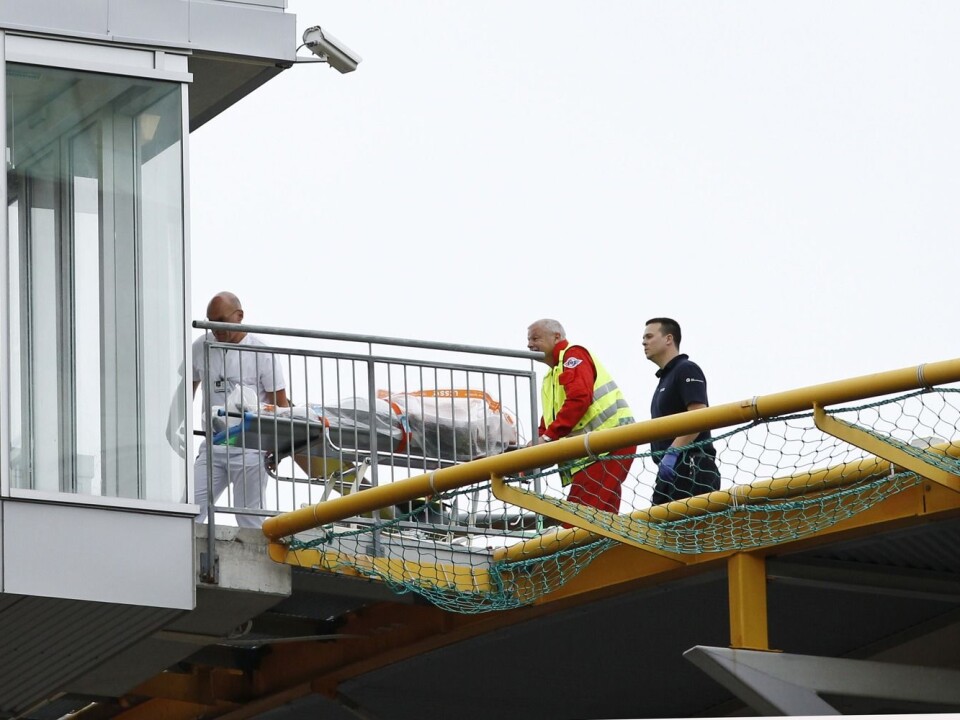
Usually journalists and photographers have an idea of what story they’re covering and the angle they may want to bring to it. But no one realized what was happening on Friday afternoon, July 22, 2011, when a deadly bomb was detonated in Oslo’s government district.
“On the first day, surprised photographers rushed out with the equipment they happened to have on them. The images aren’t necessarily well composed. A photographer I spoke with said he felt that he was just a ‘pair of eyes’ that day, simply taking pictures of what he saw,” says Simonsen.
Pictures taken in downtown Oslo far outnumber those from less-accessible Utøya, where the shooting massacre occurred after the downtown bombing.
“Many photographers are frustrated by the lack of pictures from Utøya, because the images we have affect how history is written,” says Simonsen.
Images that became important
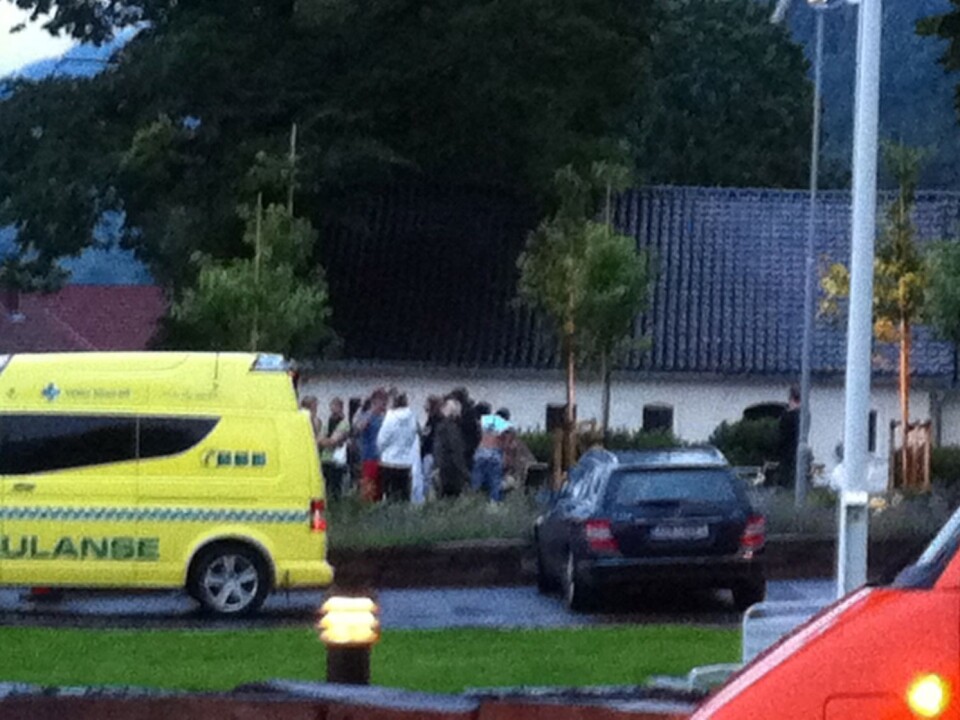
“Some pictures from the first day emerge as more iconic than others,” says Simonsen.
One is an image from an amateur video showing a rubber dinghy loaded with police officers on their way to Utøya to try to save those who were there. The dinghy’s engine had failed and it was sinking.
In contrast to this is the picture of Prime Minister Jens Stoltenberg hugging former Workers’ Youth League (AUF) leader Eskil Pedersen at the Sundvolden Hotel.
“The boat photo has become a kind of icon for impotence in the system, while the Stoltenberg picture shows the Prime Minister as a strong leader in the same system,” says Simonsen.
Second phase: Rose march and images of Breivik
In the second phase, Simonsen found closeness and sorrow, but also conflict, when she looked at the pictures and the context in which they were published. “The ‘we’ feeling of unity can be seen in the rose march, for example. The images show people who are gathered across ethnic and political affiliation,” she says, when an estimated 200,000 people gathered in downtown Oslo holding roses.
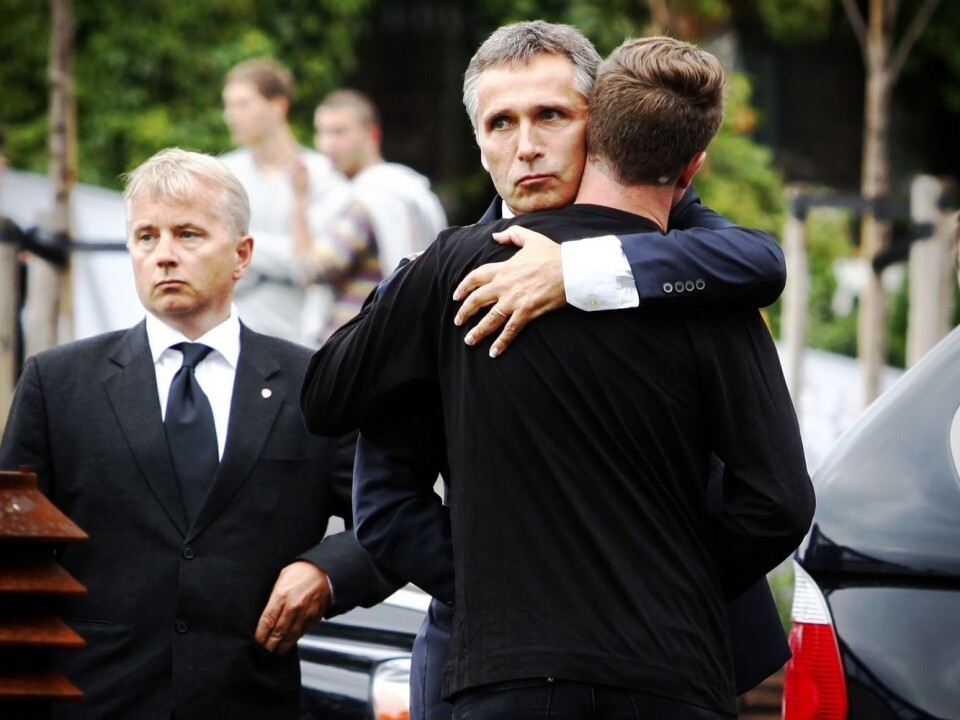
“The second phase also shows some of the controversy surrounding the images of Breivik,” says Simonsen. Calls to the Press Complaints Commission of Norway revolved almost exclusively around representations of the terrorist.

“The media may have a tendency to think, ‘Our mission is to write about him, and the picture is just an illustration.’ But where the media see an illustration, the audience can see evil,”
Simonsen says.
Final phase: The trial
Simonsen has studied newspaper photos and front pages from the trial’s beginning and end. “How can one write about Norway's largest trial ever without using photographs of the accused?” she asks.
“Some of the media chose not to use not pictures of Breivik, while others warned readers. Dagbladet used pictures of Breivik on the front, while VG used pictures of survivors from Utøya as a lead-in to the trial. Klassekampen instead had drawings of Breivik on its front and back pages, revealing the different features than a picture can.
After his conviction, many photographs of the perpetrator played specifically on his face. One picture shows Breivik as he walks past a post. “The media used it as a symbol that he was now faceless in prison,” says Simonsen.
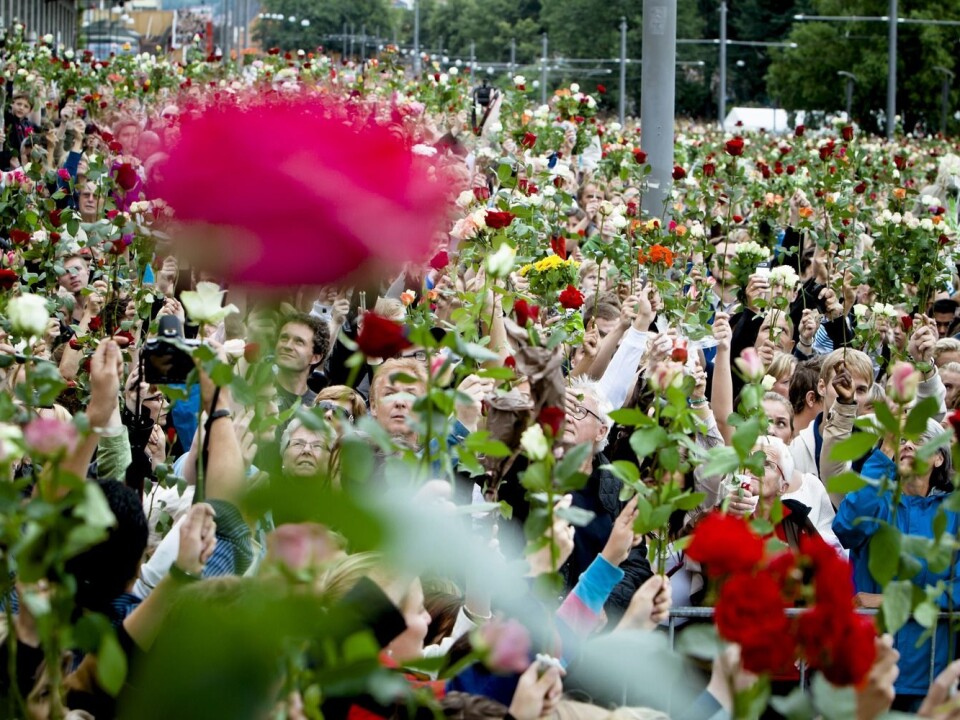
————————————————-
Read article in Norwegian at forskning.no
Translated by: Ingrid P. Nuse








